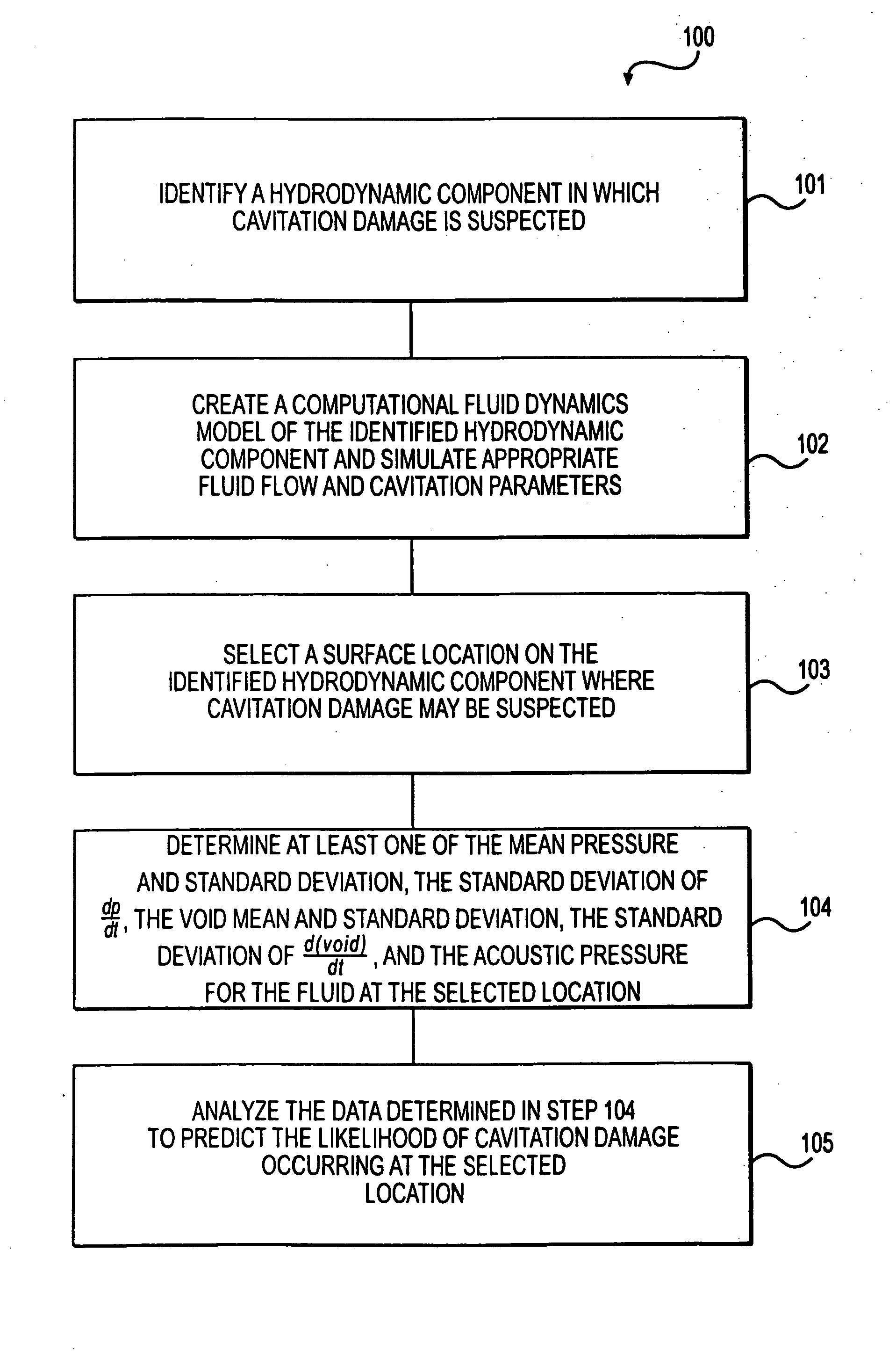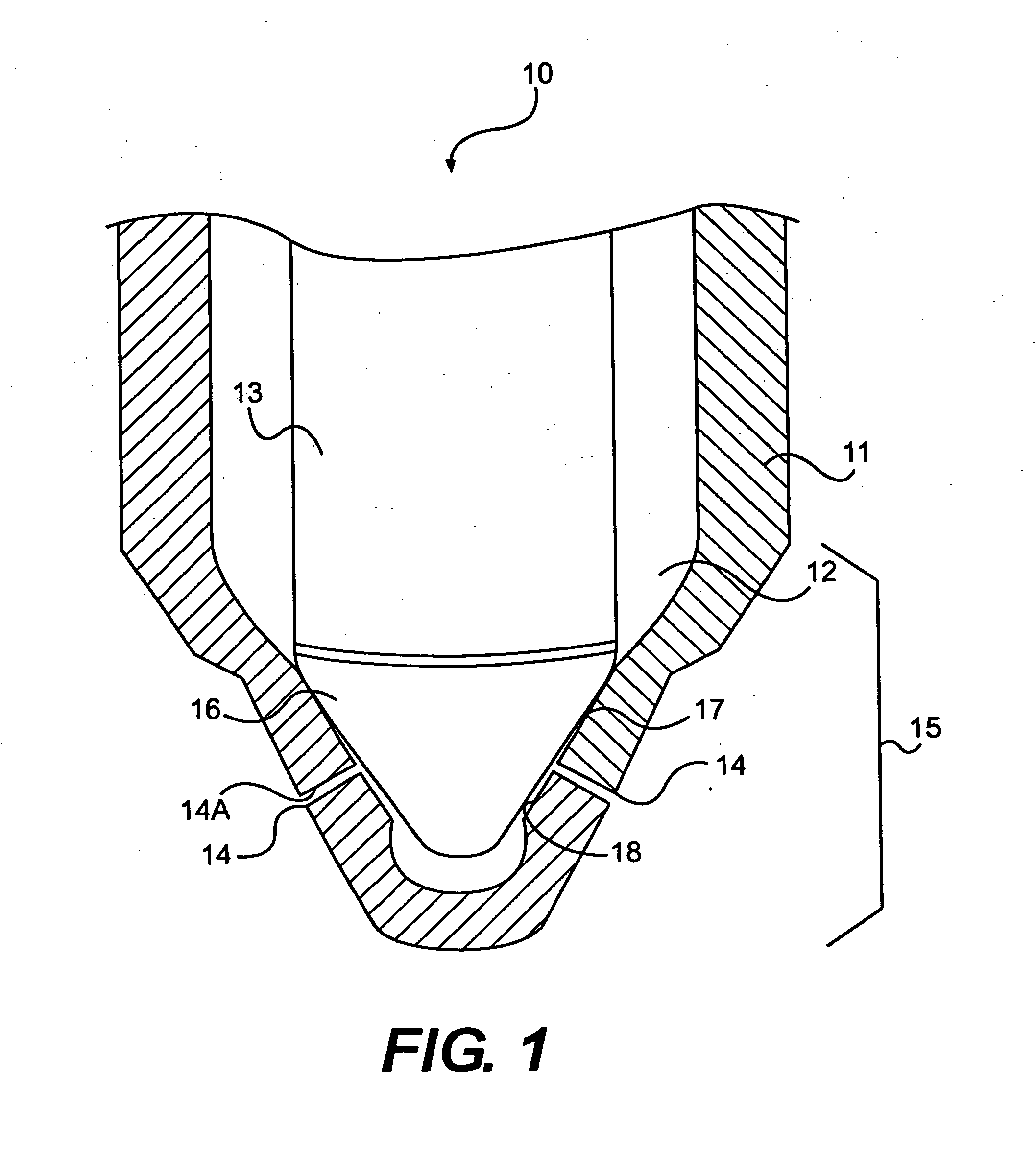Methods of predicting cavitation damage
a technology of cavitation damage and cavitation technique, applied in the field of cavitation damage, can solve problems such as material failure, equipment downtime, and cavitation damag
- Summary
- Abstract
- Description
- Claims
- Application Information
AI Technical Summary
Problems solved by technology
Method used
Image
Examples
Embodiment Construction
[0016]For discussion purposes only, the principles of the present disclosure, including method 100 discussed below, are described in connection with the exemplary hydrodynamic component depicted in FIG. 1. Although the hydrodynamic component depicted in FIG. 1 is represented as a fuel injector nozzle 10, those having ordinary skill in the art will recognize that the principles of the present disclosure may be applied to any type of hydrodynamic component, including, but not limited to, pumps, turbines, valves, propellers, pipes for transporting fluids (e.g., liquids), and any other component exposed to a proximally flowing fluid. In addition, it will also be readily apparent to those having ordinary skill in the art that the principles of the present disclosure may be utilized with components experiencing cavitation in the absence of actual flowing fluid.
[0017]In the illustrated exemplary embodiment, fuel injector nozzle 10 may include an injector body 11 that defines a hollow inter...
PUM
 Login to View More
Login to View More Abstract
Description
Claims
Application Information
 Login to View More
Login to View More - R&D
- Intellectual Property
- Life Sciences
- Materials
- Tech Scout
- Unparalleled Data Quality
- Higher Quality Content
- 60% Fewer Hallucinations
Browse by: Latest US Patents, China's latest patents, Technical Efficacy Thesaurus, Application Domain, Technology Topic, Popular Technical Reports.
© 2025 PatSnap. All rights reserved.Legal|Privacy policy|Modern Slavery Act Transparency Statement|Sitemap|About US| Contact US: help@patsnap.com



